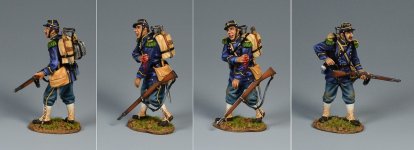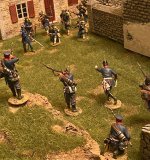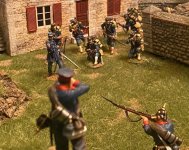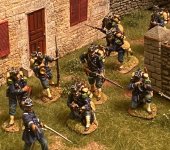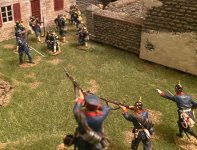TeamMiniatures
Private 2
- Joined
- Oct 21, 2019
- Messages
- 140
Hello Collectors!
In October 2021, our newly announced product is the Chasseur à Pied in the Franco-Prussian War! Hope you will enjoy these new figures.
Best Wishes,
T.M. Jack
In 1837 an experimental light infantry company was set up at Vincennes by the Duc d'Orléans. So satisfactory were the results that three years later ten full battalions were created. Known as the Chasseurs d'Orléans after their creator, they distinguished themselves in Algeria in numerous desert encounters. From 1848 the corps was known simply as the Chasseurs à Pied. In 1853 Napoleon was so impressed by their dash and marksmanship that he doubled the number of battalions to 20. Twelve battalions served in the Crimea and ten in Italy, where the 10th took an Austrian flag, a feat which earned the Légion d' Honneur for the eagle of the Chasseur corps. They were also engaged in China, Syria and Mexico.
Regarded as an élite corps, they fought well in the opening campaign against the Germans. At Froeschwiller (6 August) four battalions were practically wiped out, the 13th losing over 700 officers and men. They were organised in the same way as the infantry of the Line, with eight companies per battalion of which six usually served in the field.
The Chasseurs took the field in a dark blue tunic and képi, despite an instruction to wear the veste and shako. The tunic was easily distinguishable from that of the infantry of the Line by its pointed cuffs and blue collar. The buttons also bore a horn and the battalion number. The distinctive epaulettes and trousers further highlighted a difference that the Chasseurs were proud of. The accoutrements and equipment were identical to those of the infantry with the exception of the belt buckle.
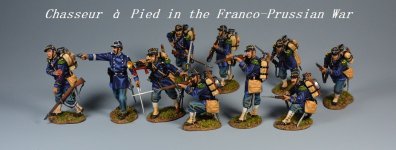
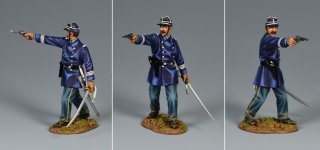
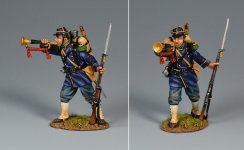

In October 2021, our newly announced product is the Chasseur à Pied in the Franco-Prussian War! Hope you will enjoy these new figures.
Best Wishes,
T.M. Jack
In 1837 an experimental light infantry company was set up at Vincennes by the Duc d'Orléans. So satisfactory were the results that three years later ten full battalions were created. Known as the Chasseurs d'Orléans after their creator, they distinguished themselves in Algeria in numerous desert encounters. From 1848 the corps was known simply as the Chasseurs à Pied. In 1853 Napoleon was so impressed by their dash and marksmanship that he doubled the number of battalions to 20. Twelve battalions served in the Crimea and ten in Italy, where the 10th took an Austrian flag, a feat which earned the Légion d' Honneur for the eagle of the Chasseur corps. They were also engaged in China, Syria and Mexico.
Regarded as an élite corps, they fought well in the opening campaign against the Germans. At Froeschwiller (6 August) four battalions were practically wiped out, the 13th losing over 700 officers and men. They were organised in the same way as the infantry of the Line, with eight companies per battalion of which six usually served in the field.
The Chasseurs took the field in a dark blue tunic and képi, despite an instruction to wear the veste and shako. The tunic was easily distinguishable from that of the infantry of the Line by its pointed cuffs and blue collar. The buttons also bore a horn and the battalion number. The distinctive epaulettes and trousers further highlighted a difference that the Chasseurs were proud of. The accoutrements and equipment were identical to those of the infantry with the exception of the belt buckle.








